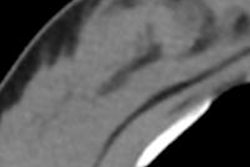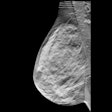Sunday, December 1 | 12:30 p.m.-1:00 p.m. | LL-BRS-SU1A | Lakeside Learning Center
In this poster presentation, British researchers will discuss how digital breast tomosynthesis can help clinicians identify the size of invasive cancers and therefore choose the most appropriate treatment.Dr. Asif Iqbal, from King's College Hospital in London, and colleagues conducted a study that compared tomosynthesis with full-field digital mammography (FFDM) and ultrasound for measuring the size of invasive breast cancer.
Iqbal's group analyzed 139 invasive cancers found by all three modalities. The researchers included only soft-tissue lesions in the study cohort, and they plotted the size differences in millimeters between modality and histology measurements.
Histologically, 108 lesions (77%) were identified as invasive ductal carcinoma, while 22 (15.8%) were invasive lobular carcinoma and nine (6.5%) were other invasive types of breast cancer. Digital breast tomosynthesis was the most accurate in measuring the size of the cancers, followed by FFDM and ultrasound. Tomosynthesis performed particularly well compared to FFDM and ultrasound in identifying parenchymal distortion and asymmetric density, according to the researchers.
Using tomosynthesis for diagnostic workup of breast cancers could help clinicians choose the most appropriate treatment for their patients, the team concluded.




















